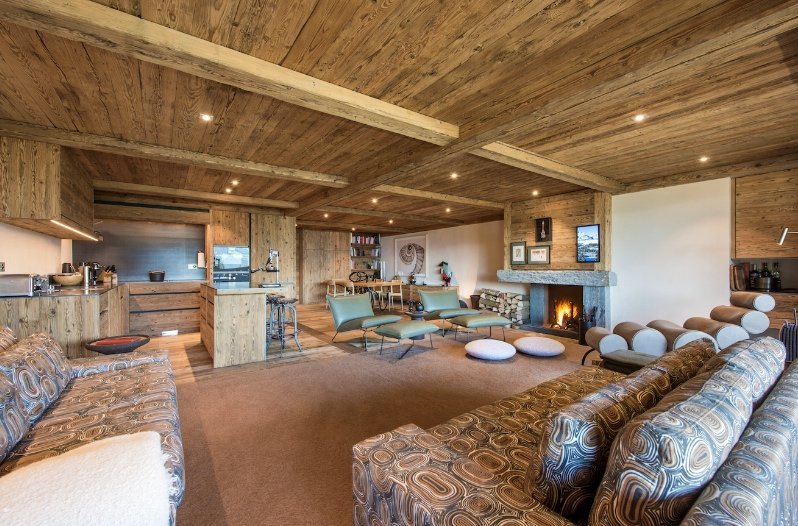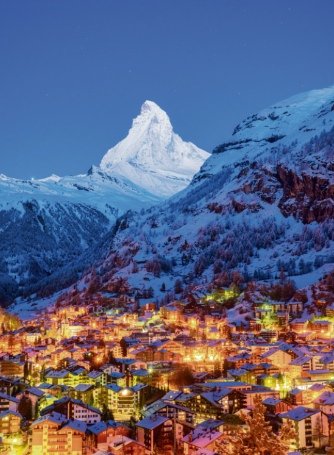Holiday Homes: Thinking about buying a ski home? Read our guide on prices, places, powder and trends
As the ski season descends upon us, it’s time to take a look at the best places to buy a ski home in the world, just in case you hit the slopes and never want to leave.
Thankfully, we’ve got all the latest facts and figures at our disposal, thanks to the World Research team at estate agent Savills, which released its latest Ski Report this month.
The report doesn’t just detail which resorts are doing well, it also looks at where prices have increased the most over the last few years as well as newcomers to the ski scene, how climate change has affected snowfall, and all the newest trends and challenges resorts are having to tackle to stay on piste in a global market.
Most prized
In terms of price, Aspen in Colorado, USA, tops the charts, with asking prices around €42,200psqm on average for luxury chalets. Though it’s still largely a domestic market, Aspen’s almost €10,000psqm in front of its nearest competitor, St Moritz, in Switzerland, at €33,310psqm. This is largely due to increased demand – the number of skiers are up globally for the first time in four years – and fewer people selling up. Val d’Isere in France isn’t far behind Aspen in terms of price, either, with a similar average price, though the most luxurious chalets are far cheaper at €29,760psqm. Prices also rose by 61 per cent this year due to President Macron’s wealth tax reforms, leading to increased demand from high-net worth French buyers.
Best to invest
Sloping downhill, there are many locations where you can buy for less, rent out handsomely and expect to get a decent return when it’s time to sell. Savills’ research shows that 54 per cent of ski chalet owners let their properties out for an average of 11 weeks a year, and 79 per cent say this is to cover costs, with only 36 per cent of owners claiming to make a profit from their ski homes.
Resorts with improvements on the horizon are a sure bet. and there are over 100 new ski lifts set to open in the Alps this season. Andermatt in the Swiss Alps is set to benefit, rising 35 places in Savills’ world rankings, due to the £1.8bn redevelopment of this old military base, which saw its heaviest snowfall last year since 2011. Prices here are around €22,110psqm for the most premium properties and, unlike large parts of Switzerland, there’s no restriction on foreign buyers until 2030.

Chemin de Creux, Verbier, Switzerland CHF9.7m
For similar reasons, Morzine in France – with prices up 70 per cent in the last five years – is one to watch, due to a proposed ski lift connecting the resort to Avoriaz with easier access to Les Portes du Soleil. A two bedroom new build apartment there will cost around €775,000. Kitzbuhel, a small town in Austria, currently sells 80 per cent of its properties to Germans or domestic buyers, but prices are on the rise here, too, and Brits may be locked out after Brexit as only EU citizens are allowed to buy there.
Restrictions on foreign nationals are having a huge impact on markets in Switzerland, where the government is seeking to protect its cultural heritage by closing entire towns off to international buyers. St Moritz has been granted a temporary reprieve, but Zermatt, for instance, is completely off-limits, leading to price falls of 13 per cent in the last five years.
As a consequence, Jeremy Rollason, head of Savills Ski, predicts there will be no new builds, only second hand property, to buy in Switzerland in two to three years’ time.
Top powder
As weather patterns become increasingly unpredictable, prices at some resorts are dropping due to unreliable snowfall. Canada and North America had a mixed year, though both of them benefit from very strong domestic markets to keep them afloat.

A view of Zermatt, Switzerland
Fluctuation in snowfall in Champery, Switzerland, led to the biggest fall in Savills’ Reliability Index, where it fell from number 35 to 55 on the list. A rise in temperature also saw ratings fall in places like Crans-Montana and Seefeld (Rosshutte).
Conversely, it found that Valle Nevado in Chile, Are in Sweden and Las Lenas in Argentina were the most reliable destinations in terms of weather patterns, making them attractive places to invest in a ski property. Whistler Blackcomb in British Columbia, Canada, recorded the most snowfall over the last eight years.
Rising trends
As climate change alters the traditional ski season, many resorts are looking to lengthen their seasons to draw in punters all year round. Aside from hiking and biking, there are a number of resorts that now host music festivals in the summer, golf tournaments, horse shows and zip-lining through the mountains. The Morzine-Montriond Triathlon took place for the first time last year, for example.
Picking a year-round destination to invest in also means it’s more likely you’re going to be able to let your second home easily out of ski season. Again, Morzine in France is good for this with 11 tennis courts and Europe’s highest water park on its turf; Grindelwald in Switzerland boasts zip-lines, lively vinotecas and mini-golf; and Megeve is also known for summer luge, canyoning, Golf du Mont d’Arbois and it’s easily accessible from Geneva, making it perfect for mini-breaks and business travellers.
Skiing is an expensive hobby, and as such, it’s falling out of favour with millennials. Rollason adds that asset-rich buyers over the age of 40 are frequently using equity to buy their ski homes rather than debt, something that millennials typically don’t have access to.
This means that many resorts are setting themselves up for cheaper, shorter weekend breaks, installing super-fast Wifi – consistently at the top of millennial renters’ ski wish list – and are even jumping on the ‘wellness’ trend.
“Private residences are now incoropating five-star wellness facilities,” says Sophie Chick, director at Savills World Research. “There is also a rise in chalets and hotels specialising in retreats that combine skiing and yoga. Food is also playing an important part with hotels and ski operators offering ‘clean’ or vegan menus as visitors look for more than the traditional cheese heavy Savoie-style dishes.”
This approach is becoming increasingly popular in Japan, for instance, where an ageing population means visitor numbers are falling in the Japanese Alps.